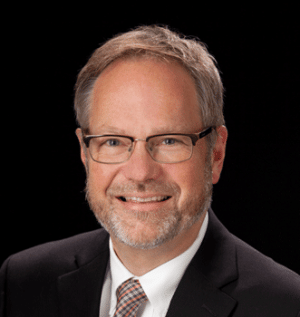
Gregory Peterson is Professor of Music and College Organist Emeritus at Luther College, Decorah, Iowa, where he taught applied organ, church music, and January Term courses abroad including France, Namibia, and South Africa. He also served as Cantor to the Luther Student Congregation, and was the conductor of Luther Ringers, which he founded. From 2011–2017 he was Head of the Music Department.
Dr. Peterson retired from Luther College in May 2022, and accepted a new call as director of worship and music at Normandale Lutheran Church, Edina, Minnesota, where he is principal organist and oversees a large and varied choral and instrumental music ministry.
A respected leader in the field of church music, Dr. Peterson served the historic Old South Church in Boston, Massachusetts as Organist and Minister of Music from 1997–2005. At Old South, he directed the Old South Choir, Old South Ringers, and performed regularly with the Old South Brass, Organ and Timpani Ensemble including the ever-popular annual First Night Concerts on New Year’s Eve. Prior to his appointment in Boston he was Visiting Assistant Professor of Music and Christ Chapel Organist at Gustavus Adolphus College in St. Peter, Minnesota. He has also been a visiting professor at Pacific Lutheran University in Tacoma, Washington, and served as music director for churches in Connecticut, Iowa, Minnesota, and Washington. He served on the Development Committee and as a Trustee of the Association of Lutheran Church Musicians, and was President of ALCM from 1997–2001. He is active in the American Guild of Organists, and is a frequent workshop leader at various conferences. For the past nine seasons, he has served as organist for the annual Christmas Festival concerts by the National Lutheran Choir.
Gregory Peterson is an internationally acclaimed recitalist. Important performance venues include St. James Cathedral, Seattle, Washington; Lagerquist Hall at Pacific Lutheran University, Tacoma, Washington; Independent Presbyterian Church, Birmingham, Alabama; Trinity Church, Boston; the Memorial Music Hall, Methuen, Massachusetts; the Basilica of Our Lady of Perpetual Help (Mission Church), Boston; Old West Church, Boston; and New York City's famed Riverside Church and Central Synagogue. European venues include Matthäuskirche, Berlin; the Berlin Cathedral; Gedächtniskirche Berlin; Helsinki’s Rock Church; St. Anne’s Church, Warsaw; St. Nicholas Church, Prague; St. Thomas Church, Leipzig; Uppsala Cathedral in Sweden; and St. Augustine’s Church, Cardiff. He is featured on the critically acclaimed compact discs “Heroic Sounds,” recommended for “nice music superbly played” (Journal of the Association of Anglican Church Musicians) and “Dieterich Buxtehude: A 300th Anniversary Celebration,” noted for its “stylistic integrity, energy, strength, clarity, crisp articulation, clear phrasing and well-controlled rhythm” (The American Organist). His most recent releases are “Songs of Peace, Petition and Proclamation” and a Christmas disc, “Air with Joy Is Ringing.”
Gregory Peterson earned the BA degree in music at Luther College. He holds the MM degree from Yale University in the Institute of Sacred Music where he was Hugh Giles Scholar and received the Harry B. Jepson Memorial Scholarship. He received the DMA degree in organ performance and pedagogy from the University of Iowa where was a Rahn Scholar and teaching assistant. He has participated in the Summer Institute for French Organ Study and the Gothenburg International Organ Academy in Sweden.

